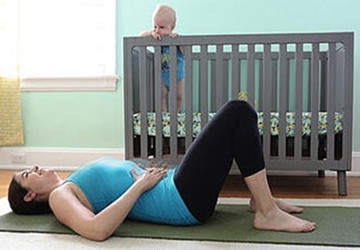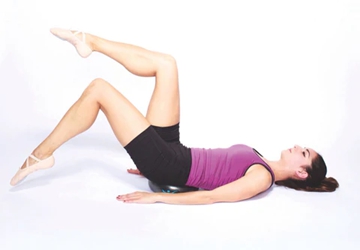Meta Description
“Has your belly not exactly returned to its pre-pregnancy state? Are you having a hard time getting rid of that lower abdominal pooch? There are several reasons why you may have a lower abdominal pooch, Read on to find out more.”

Core Changes During Pregnancy And Postpartum
It is essential to consider how pregnancy impacts the musculoskeletal system. The abdominal muscles stretch, and the back muscles shrink as the belly swells. Diastasis Recti occurs when the connective tissue in the linea alba thins and separates. The ligaments and joints of the pelvis become very brittle. Under the burden of the fetus, the pelvic floor frequently weakens.
Even the diaphragm adapts to the expanding belly, influencing breath mechanics: Short, shallow chest breaths are caused by the rib cage sliding backward to get out of the course of the pregnancy.
After the baby is born, things don't magically fall back into place. Physical changes occur throughout the postpartum recovery phase. Many women stay sedentary for months after giving birth, which causes even more stiffness and weakness.
Progressive Postpartum Core Program

1. BASIC BREATH:
Practice deep diaphragmatic breaths when laying, sitting, or standing: Start with a primary spine. You'll feel your pelvic floor, rib cage, and abs sink or open as you breathe in.
As you exhale, raise the pelvic floor, draw the abdomen, shut the rib cage, and hold for 5 seconds. Work up to 5 to 10 abdominal contractions daily with 5 to 10 breaths. Go to the next level when you can contract and release your abdominal muscles without shifting your spine.
2. HEEL SLIDES:
Lie on your back with your knees bent, spine neutral, and arms at your sides. Begin by engaging the abs with the basic breath. Inhale as you slowly slide one leg out, so it is parallel with the floor, then exhale as you move it back into the initial position. Alternate sides, stretching one leg out and then back for one rep.
Throughout this activity, your back should stay neutral. You can go to the next level when you can easily do 20 heel slides on each leg.
3. TOE TAPS:
Lie on your back with your legs bent, spine neutral, and arms at your sides. Begin by engaging the abs with the basic breath. Then exhale and raise your legs one at a time to tabletop posture. Keeping one leg bent, inhale and slowly drop one foot to the floor, then breathe out to revert back to the tabletop. Work up to 10 steady reps on each leg (with no alterations in lower back posture) before progressing to the next level.
Word Of Advice
The essential thing to bear in mind is that you may rehabilitate your core at any time of day, even when sitting. While caring for your infant, be attentive to your body, breathing with intent, and sitting and standing with proper posture and alignment.
